Abstract
Lumpy skin disease virus strains isolated in Kenya over a period of some 20 years have proved to be serologically identical. They were indistinguishable by indirect fluorescent antibody and serum neutralization test from the South African Neethling and West African serotypes. These two serological methods proved of value in studying the antibody responses to infection. While epizootic spread of LSD has occurred in Kenya, most cases are of a sporadic nature and are thought to be the result of accidental contacts with a maintenance cycle. There is evidence of antibody to LSD in the African buffalo (Syncerus caffer) in those areas where LSD is considered to be enzootic in Kenya, and also in small numbers of domestic cattle. No buffalo or bovine sera contained antibody to cowpox virus. An area enzootic for LSD is proposed and it is suggested that the maintenance cycle involves the buffalo. No antibody was found in the other wild ruminant species examined.
Full text
PDF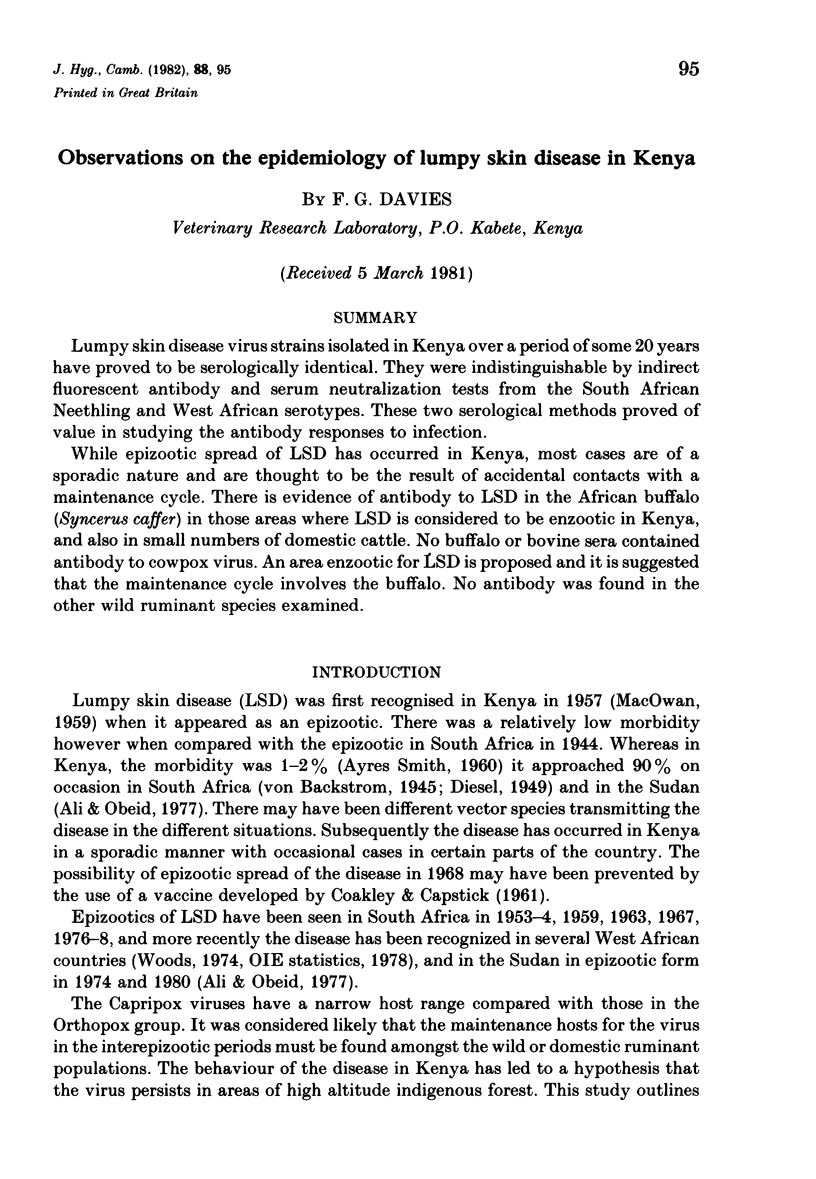
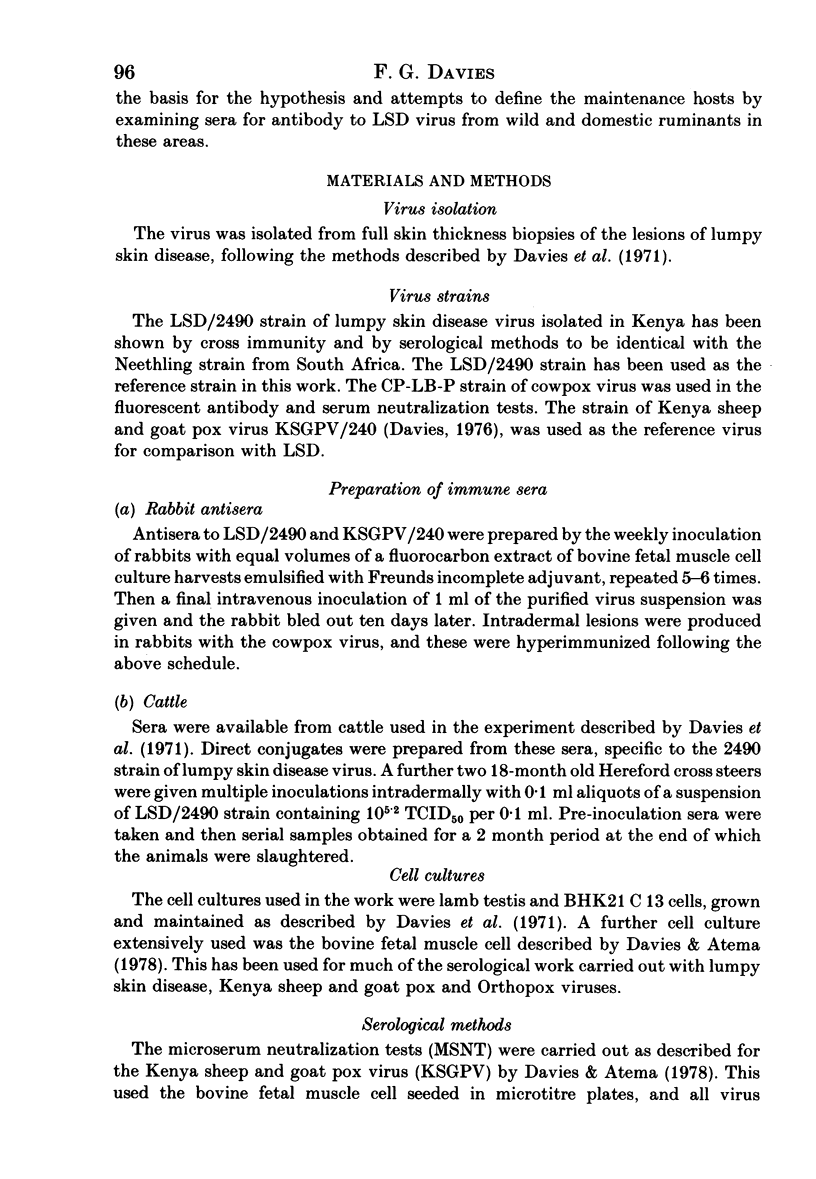
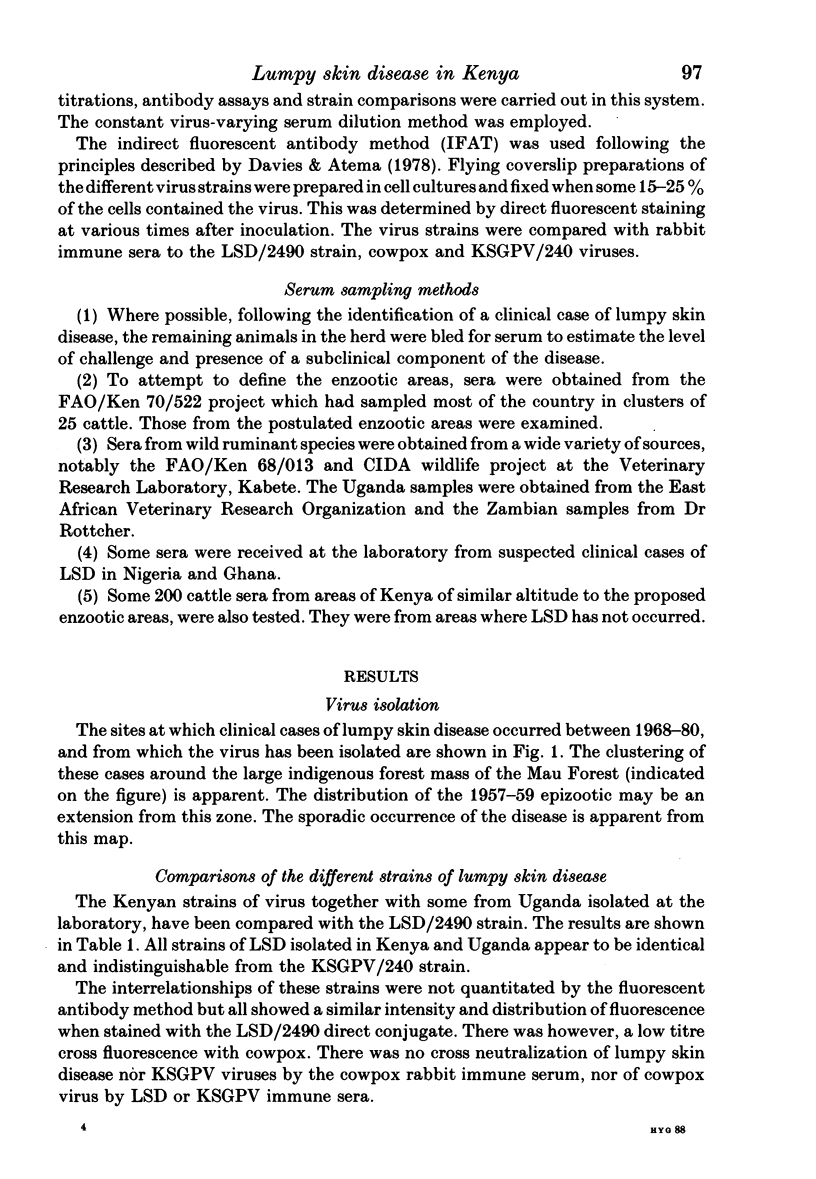
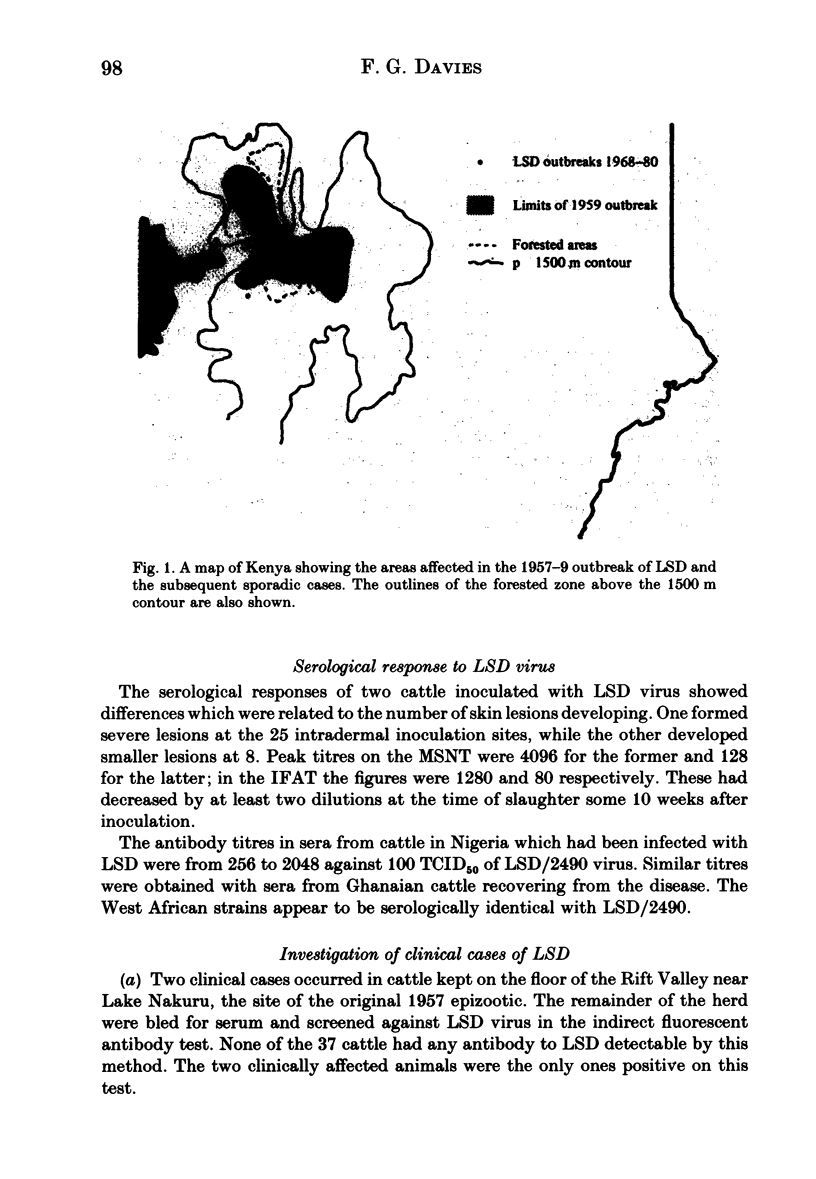
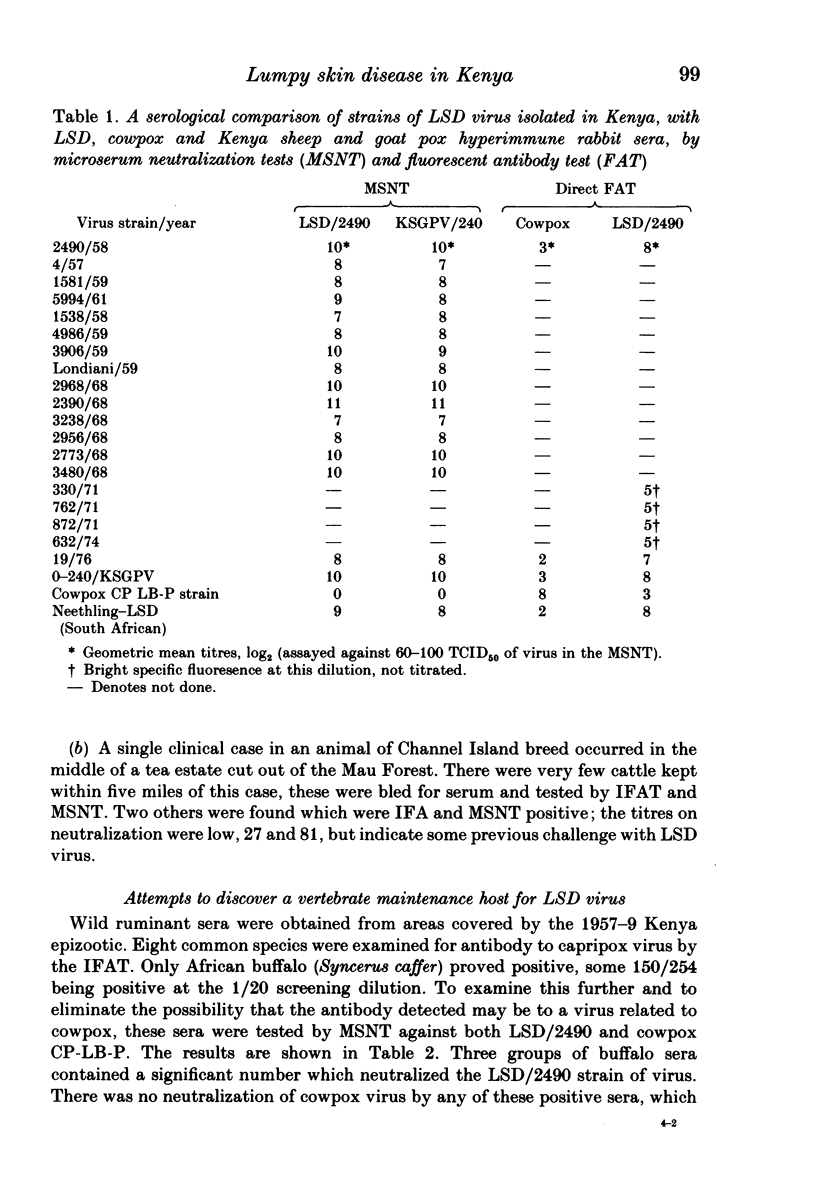
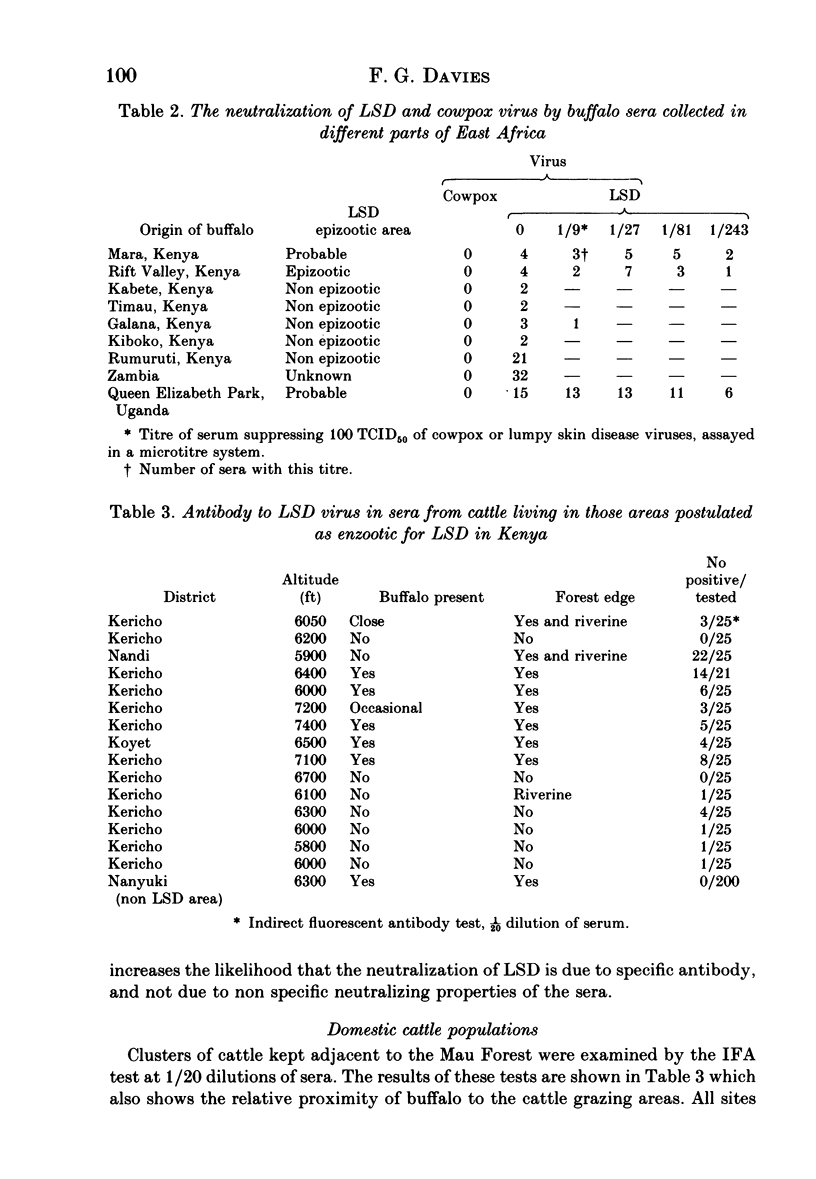
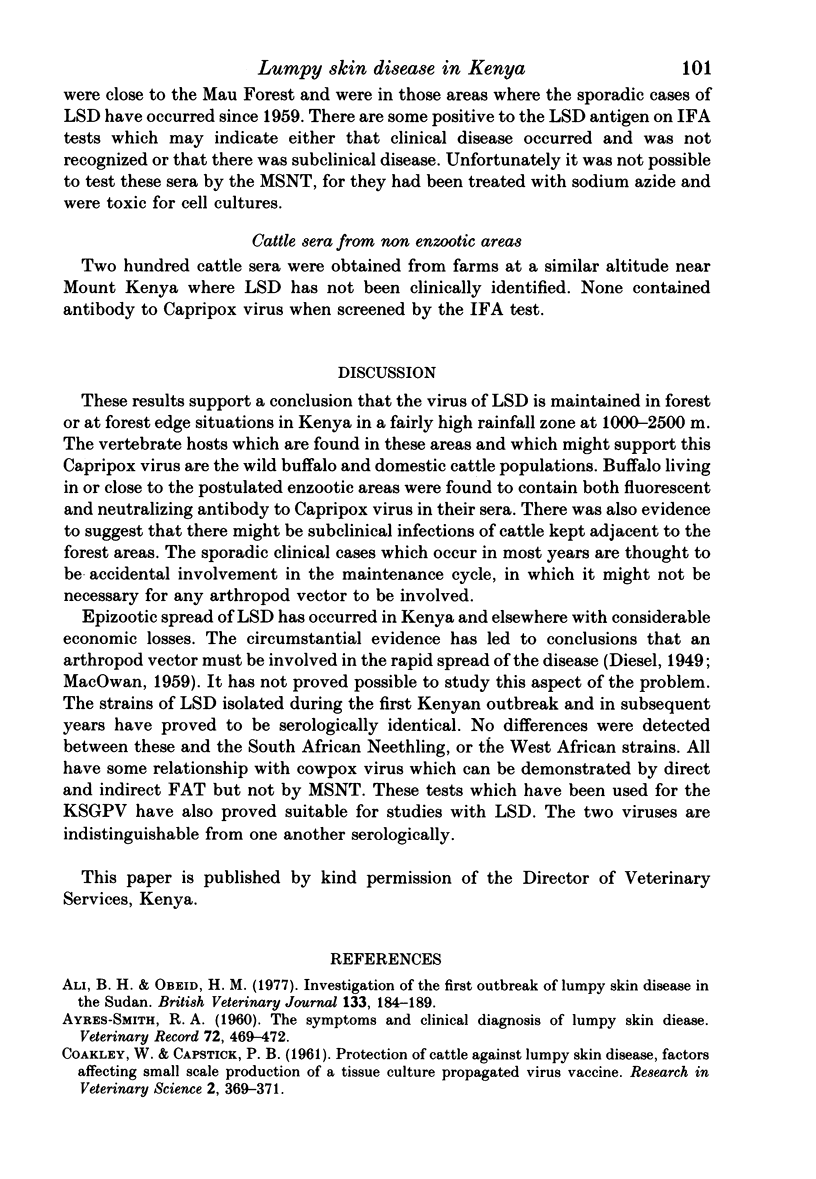
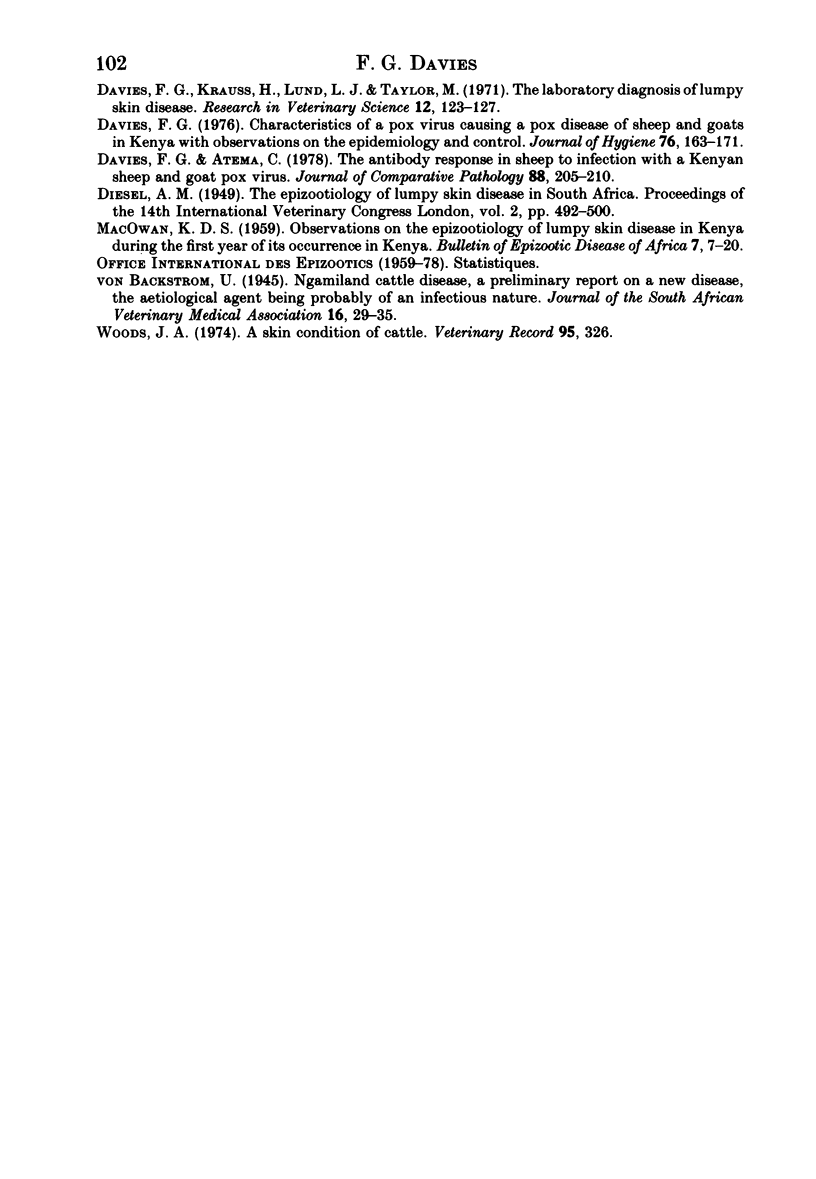
Images in this article
Selected References
These references are in PubMed. This may not be the complete list of references from this article.
- Ali B. H., Obeid H. M. Investigation of the first outbreaks of lumpy skin disease in the Sudan. Br Vet J. 1977 Mar-Apr;133(2):184–189. doi: 10.1016/s0007-1935(17)34140-4. [DOI] [PubMed] [Google Scholar]
- Davies F. G. Characteristics of a virus causing a pox disease in sheep and goats in Kenya, with observation on the epidemiology and control. J Hyg (Lond) 1976 Apr;76(2):163–171. doi: 10.1017/s0022172400055066. [DOI] [PMC free article] [PubMed] [Google Scholar]
- Davies F. G., Krauss H., Lund J., Taylor M. The laboratory diagnosis of lumpy skin disease. Res Vet Sci. 1971 Mar;12(2):123–127. [PubMed] [Google Scholar]
- Davies F. G., Otema C. The antibody response in sheep infected with a Kenyan sheep and goat pox virus. J Comp Pathol. 1978 Apr;88(2):205–210. doi: 10.1016/0021-9975(78)90024-5. [DOI] [PubMed] [Google Scholar]
- Woods J. A. Letter: A skin condition of cattle. Vet Rec. 1974 Oct 5;95(14):326–326. doi: 10.1136/vr.95.14.326. [DOI] [PubMed] [Google Scholar]



